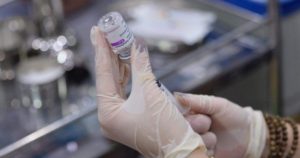
Diamond Fun Facts to Blow Your Mind
[ad_1]

What are fun facts?
Fun facts are pieces of useful information. They’re different than nickel knowledge, which is defined as information that’s nice to know, but that no one really cares about.
Good fun facts are “edu-tainment” – they stimulate conversation by teaching something interesting. The more fun facts you commit to memory, the more stimulating you become, the more people like you, the more you get invited to social events and parties.
Nickel knowledge, nobody knows if fun facts actually get you invited to parties.
Diamond 4Cs Fun Facts
Flawless doesn’t exist.
Why? Because clarity is graded at 10X magnification. There might be something to see at 20X, 30X, or 40X magnification but inclusions beyond 10X are not factored into the clarity grade… Zooming in beyond 10X can reveal extremely minute characteristics, even in flawless diamonds.
Remember that Mother Nature – or Bob the Builder, for Lab Grown Diamonds – made every diamond different. In fact, some of the coolest diamonds and gemstones you’ll ever see are those with super interesting inclusions.
For me, the undisputed King of Cool Clarity is the Dom Pedro Aquamarine.
Check it out.
True color.
When you look at a mounted diamond you are not seeing the color grade it earned at the lab. Why? Gemologists perform D to Z color grading with the diamond upside down, looking through the side. This is for two reasons – first to eliminate the face-up influence of fluorescence or phosphorescence, and second because cut influences face-up appearance.
This is one of the reasons diamonds colored G, H, I, J, and below gained popularity as modern round diamonds began replacing older cuts. Diamonds with better cut consistency and superior angles show less color when seen from the top than diamonds with angles that keep light bouncing around and illuminating the body color present.
Fancy color.
Unlike diamonds in the D-Z range, fancy-colored diamonds are graded looking down on the top. This means diamond cutters use a different strategy for FCDs, employing shapes and geometries that keep light reflecting around inside the stone as long as possible to exaggerate that body color.
“LightWeight”
You can’t judge a diamond’s physical size appearance by its carat weight because diamonds of the same weight can have different millimeter spread – jewelry professionals should all know this.
What’s lesser known is that two diamonds of the same physical size can have different visual size-appearance, depending on how they were cut. In fact, seen in low light conditions a diamond of average cut can look visually smaller than well-cut diamonds of the same size because they remain bright from edge to edge.
Natural Diamond Fun Facts
One world, one origin.
Diamonds formed 1 -3 billion years ago during the supercontinent cycle, crystallizing under landmasses known as Vaalbara, Ur, Kenorlan, and Nuna. The final supercontinent, Pangaea, began to break apart 175 million years ago, ultimately separating into the world’s seven continents, where we now identify diamond mines and sources. However, when referring to the “origin” of any natural diamond, none of today’s geography, maps or borders actually apply.
Old lady diamond.
The oldest diamonds date back 3 billion years, and the youngest diamonds are around 1 billion years old. The dinosaurs only started chomping things 200 million years back and humans have existed for a fast 200,000 years. Putting that in context, if the youngest diamonds were celebrating their 100th birthday today, human history is less than a week old. And if the oldest diamonds were 100 years old today, humans have only existed for 48 hours.
Lab-Grown Diamond Fun Facts
HPHT magnetism.
In HPHT-grown diamonds a metallic catalyst is used to dissolve carbon which migrates to the diamond seed. If enough metal fragments remain within the finished diamond it may be attracted to a magnet.
Check it out.
CVD defies nature:
CVD diamonds are grown at negative pressure, defying the rules of nature. Under ordinary circumstances, without applying gigapascals of pressure, the result of such a process would be graphite, but scientists use brute energy force to etch graphite atoms away and bond carbon together until it doesn’t want to separate – literally custom-building a diamond atom by atom!
TOO NERDY?
Okay, just tell them we’re pushing Mother Nature around with technology.
Wishing you many happy conversations (and party invites) ahead!
Written by John Pollard
Comments?
Have you seen the Dom Pedro Amethyst before? Isn’t it awesome? Do you think flawless diamonds are better than VVS diamonds? Are diamonds “better” or “worse” due to natural color or clarity differences? Had you heard of the oldest supercontinent Vaalbara before? Would you name your oldest child Vaalbara? Would people spell their nickname Vaal or Val? Do you think it would be fun to have a magnetic lab-grown diamond? What about a magnetic, fluorescent lab-grown diamond? Are owls funny-looking?
DISCUSS ON PRICESCOPE
More Reading
Learn how to define brightness, leakage, contrast, and scintillation on our page Diamond Performance Explained.
Take your diamonds on a brightness, fire, and sparkle test drive: Make Comparisons Like an Expert.
Get fast answers to any question: Ask our community of unbiased independent helpers.
Ready to find your diamond?
SEARCH LOOSE DIAMONDS NOW
Published on: September 13th, 2021
[ad_2]
Source link

